Finally, first hostages emerge from the subterranean darkness into light of love and home
The final nerve-racking moments of an unspeakable 15-month ordeal for three young Israeli women has played out in front of the world as an uneasy and fragile ceasefire took hold in Gaza.
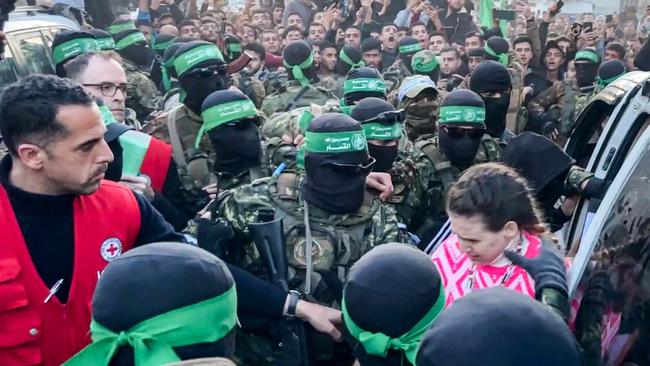
They emerged at last from the horrors of Hamas; out of the darkness and into the light. The final nerve-racking moments of an unspeakable 15-month ordeal for three young Israeli women has played out in front of the world as an uneasy and fragile ceasefire took hold in Gaza.
In the space of a few tense hours, Romi Gonen, Emily Damari and Doron Steinbrecher – the first of 33 hostages to be released in the initial stage of the Israel-Hamas ceasefire deal – went from being surrounded by dozens of masked Hamas militants in a Gaza City square into the arms of their tearful mothers in Tel Aviv.
It was a journey Israelis have only dared to dream of in recent days as it became clear the ceasefire deal – long delayed but still desperately precarious – would actually succeed in returning some of the hostages whom many had feared would never come home.
Crowds in so-called “Hostages Square” in Tel Aviv watched anxiously as screens showed frightening footage of the three women – Emily, 28, Romi, 24, and Doron, 31, – being transferred from a Hamas van to a Red Cross vehicle in a Gaza City square surrounded by dozens of armed and masked Hamas fighters who were trying to fend off the hundreds of their supporters surging towards the van.
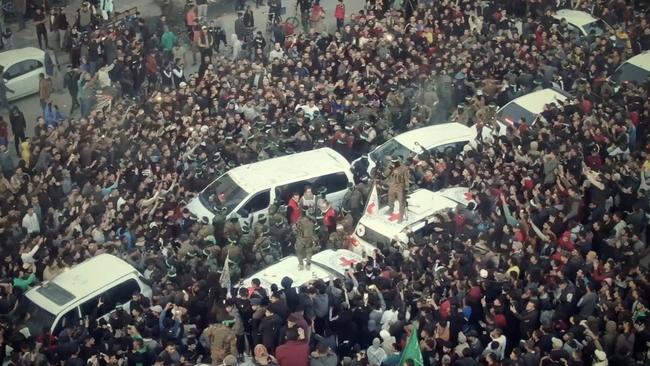
The women made it through the chaotic cordon of Hamas members and into a Red Cross van, which drove them to safety. The crowd in Hostages Square hugged, cried and applauded when it was announced the women were in the custody of the Red Cross. Only then did we see the hostages smile.
Before long, the three were filmed in tearful embraces with their families. In one social media post, Emily showed her hand with two fingers missing from her kidnap on October 7, 2023, but Israeli officials said the women all initially appeared to be healthy.
Romi was a waitress who was taken from the Nova music festival, Doron was a veterinary nurse taken from her home in the kibbutz Kfar Aza, and Emily, a Britain-Israeli citizen, was also taken from her home in Kfar Aza.
Doron’s family expressed their gratitude to incoming US president Donald Trump for his “significant involvement and support, which meant so much to us”.
Mr Trump’s threat to unleash “all hell” on Hamas if the terrorist group did not release hostages before his inauguration is seen as a key driver of the timing of the long-delayed ceasefire deal.
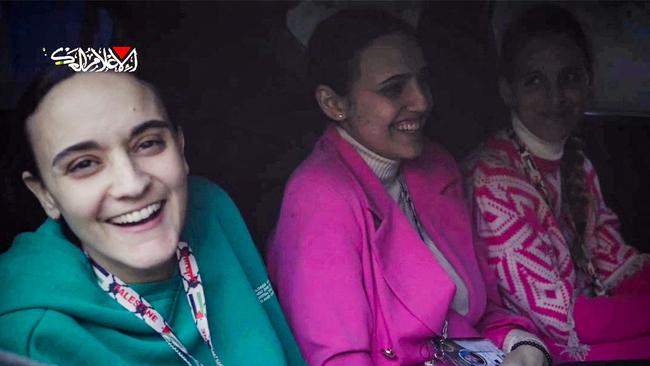
“After an unbearable 471 days, our beloved Dodo has finally returned to our arms. We want to express our heartfelt gratitude to everyone who supported and accompanied us along this journey,” the Steinbrecher family said.
“Romi, Emily and Doron – so beloved and missed – an entire nation rejoices at your return,” Israeli President Isaac Herzog said of the hostages’ release, adding that it was “the beginning of a challenging journey of recovery and healing together”.
“I know, we all know, they’ve been through hell,” Prime Minister Benjamin Netanyahu said. “They are coming out of darkness into light. This is a big moment, an exciting moment.”
The release of the three women, which will be followed by the freeing of a further four female hostages at the end of the week, triggered a cascade of events across Gaza as the terms of the ceasefire kicked in.
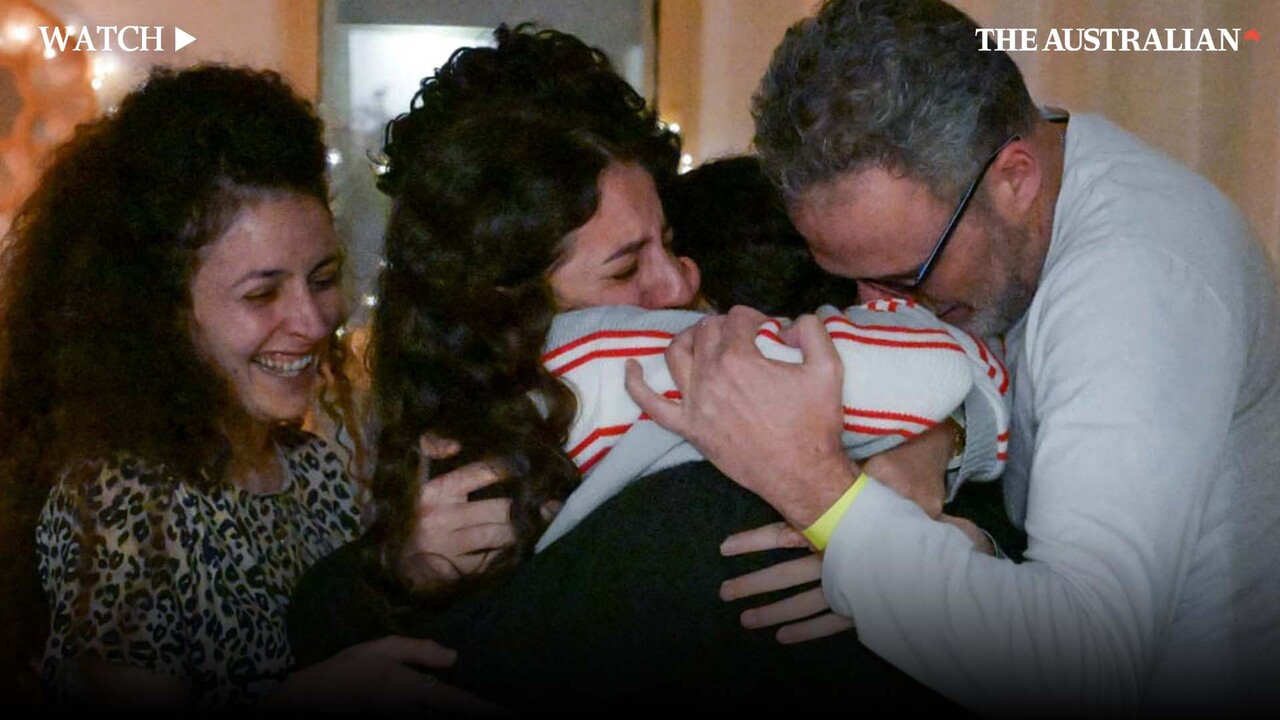
Israeli troops began to withdraw from towns in central and northern Gaza, moving east towards the Israeli border.
Thousands of displaced Gazans began the trek back to their homes in the north of the enclave, walking past a moonscape of damaged and destroyed buildings, as they tried to return to what remained of their homes. Hundreds of aid trucks began to enter Gaza in a race against time to deliver enough food, water and supplies into the enclave to ease the acute humanitarian crisis there.
Meanwhile, in the West Bank, 90 Palestinian prisoners were released, including 69 women and nine children, as part of the agreed prisoner swap that will eventually see some 1900 Palestinians released in exchange for the Israeli hostages.
Hamas used the ceasefire deal to kick off its own propaganda campaign.
The militant group surrounded the freed hostages with dozens of armed men as a way of sending a message to the world that the group was not defeated.
Elsewhere in Gaza, armed militants drove through the streets in celebration while the Hamas-run police force said it was moving to “preserve security and order” in Gaza, despite Israel having said it would not tolerate Hamas control over Gaza in the future.
Hamas military spokesman Abu Obeida, in a televised speech, praised the war as an “incredible victory and blessed triumph”, although he acknowledged that Gazans had paid a heavy price.
Israel and Hamas agreed to observe a 42-day truce, during which Hamas is expected to stagger the release of 33 of the roughly 100 hostages it still holds – although around 30 to 40 are believed to be dead – in exchange for the release of Palestinian prisoners.
But it is a fragile ceasefire, with the second stage, due after the six-week first stage, calling for the release of all hostages, a permanent ceasefire and the withdrawal of all Israeli forces from Gaza.
Israel and Hamas have not yet agreed on key aspects of the second stage, amid concerns the deal could collapse and trigger renewed fighting.


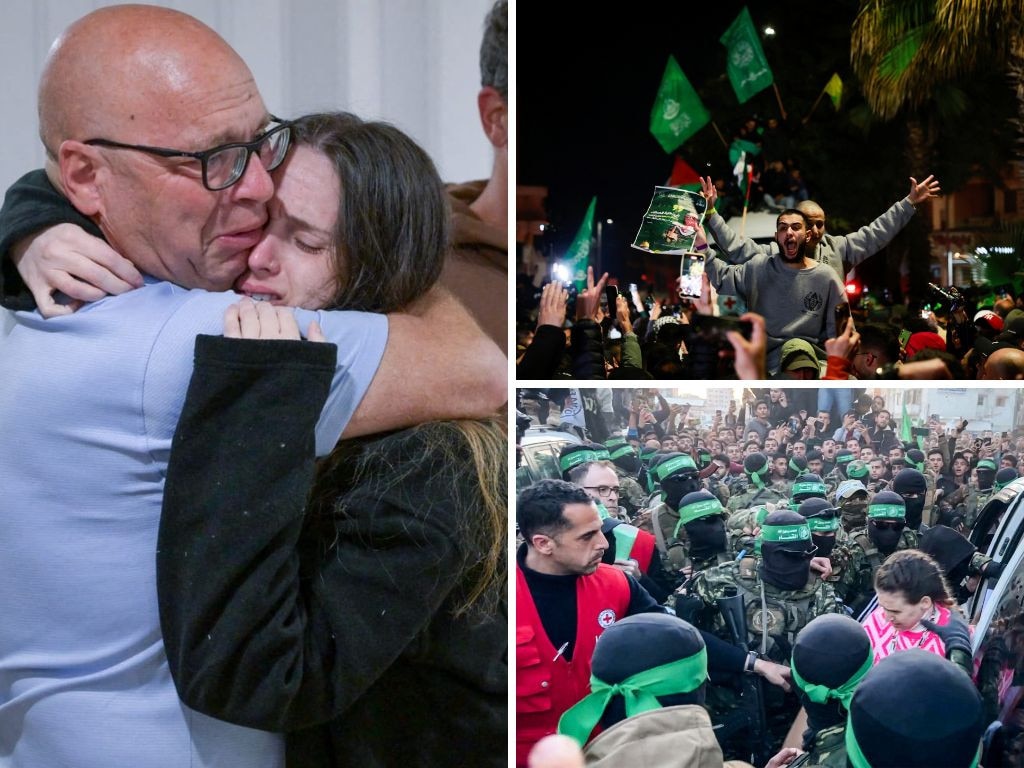



To join the conversation, please log in. Don't have an account? Register
Join the conversation, you are commenting as Logout